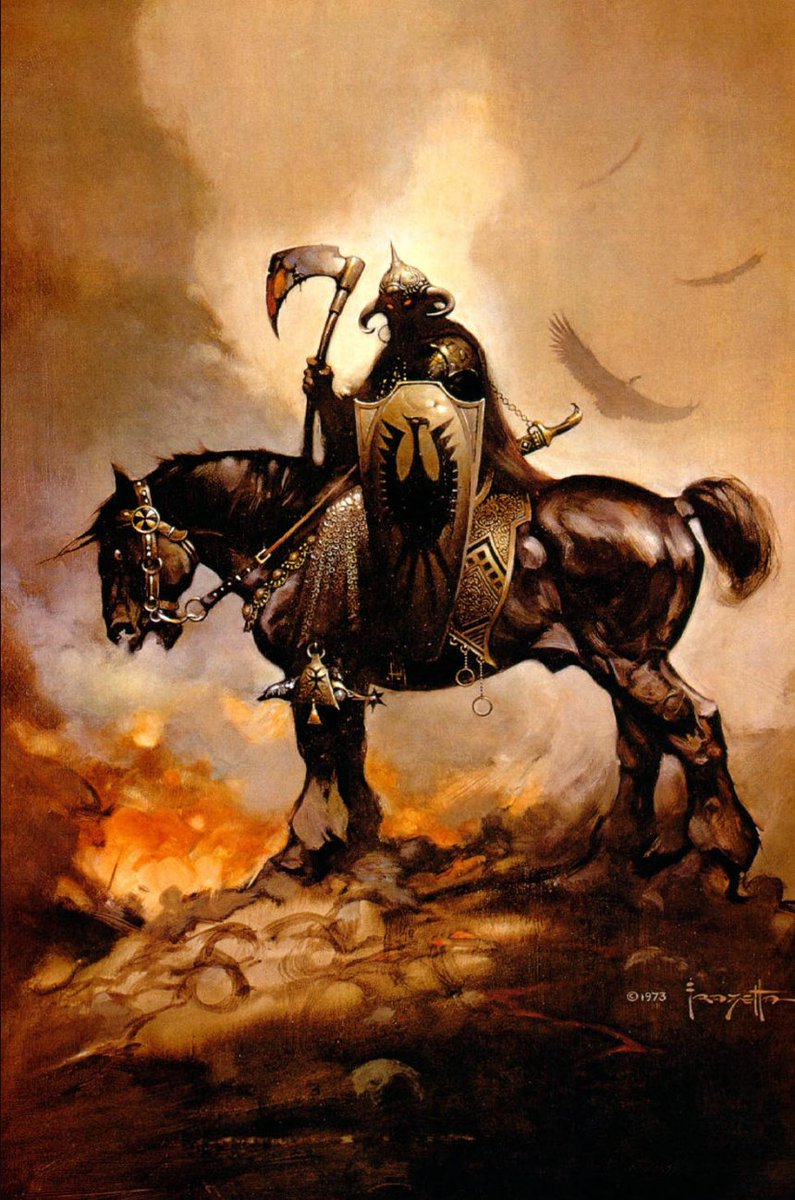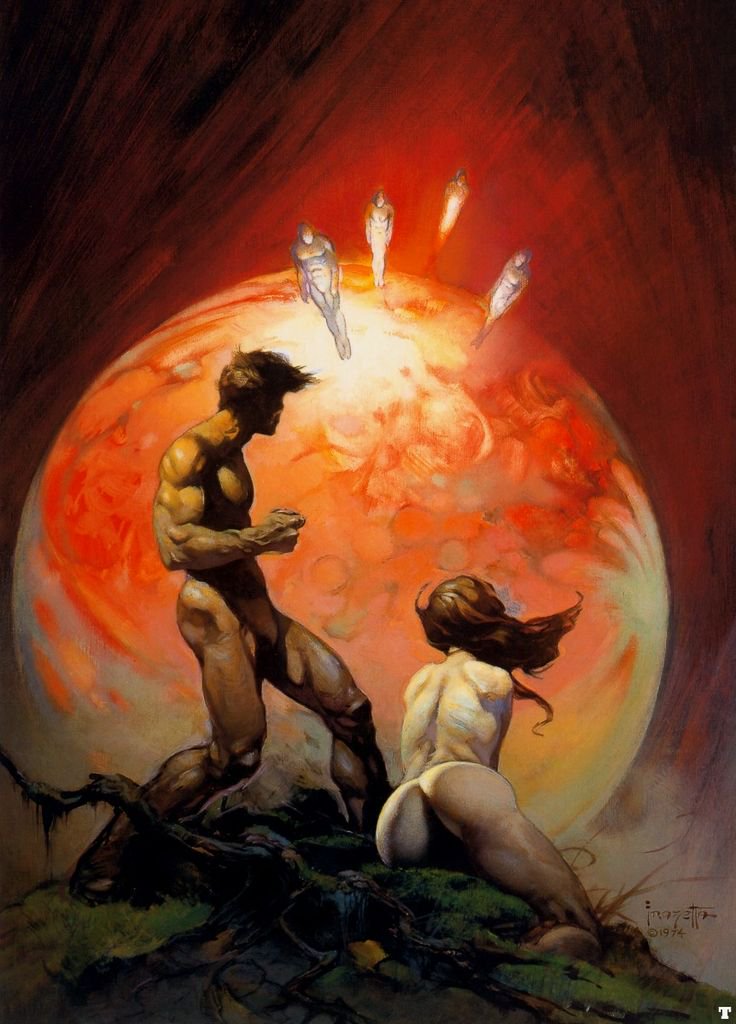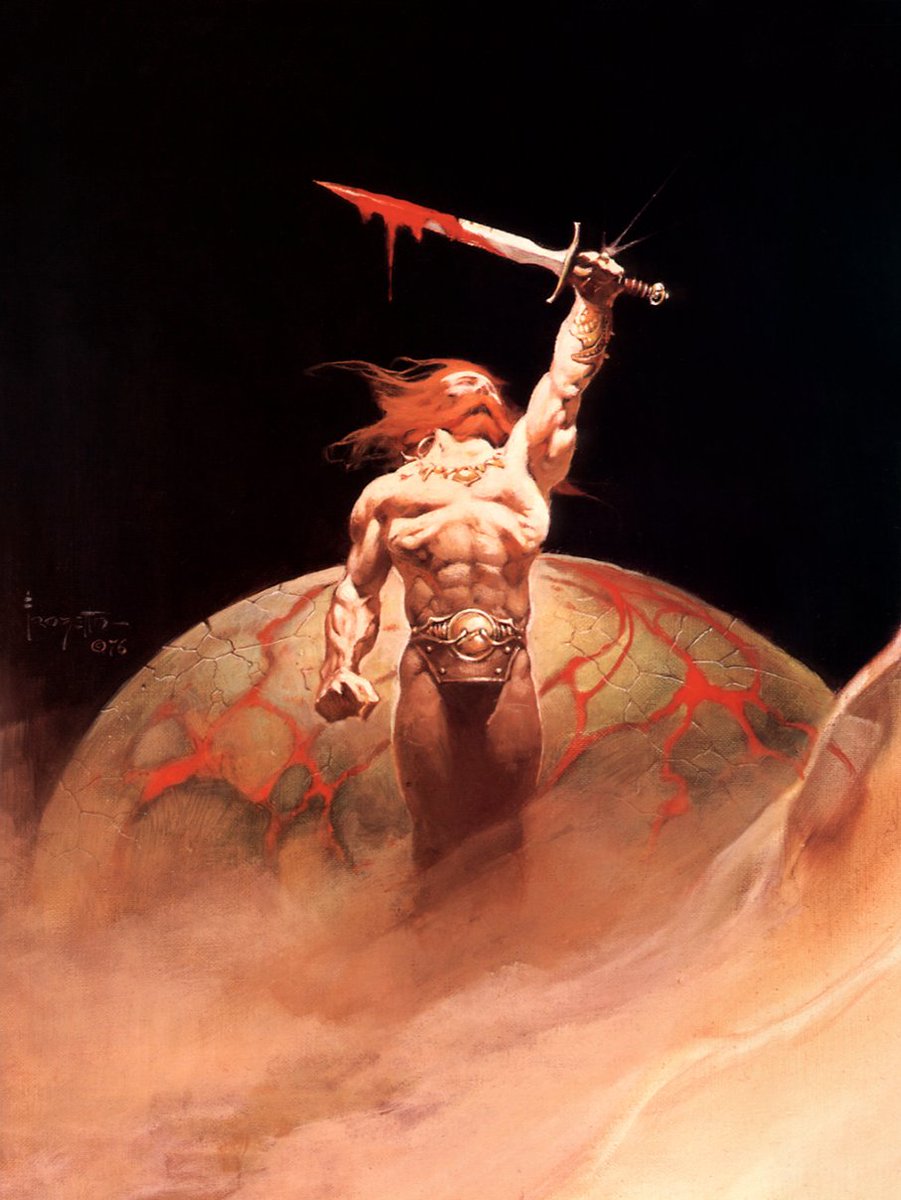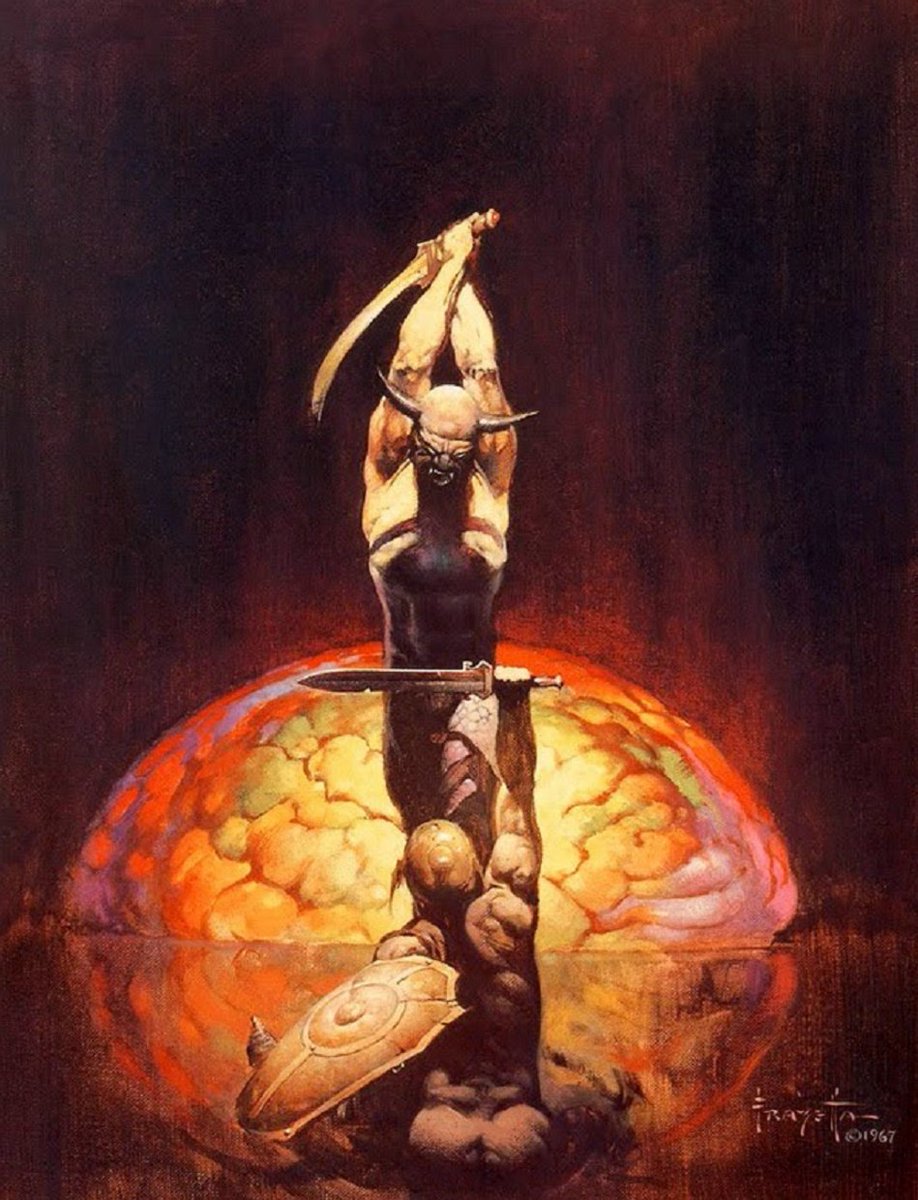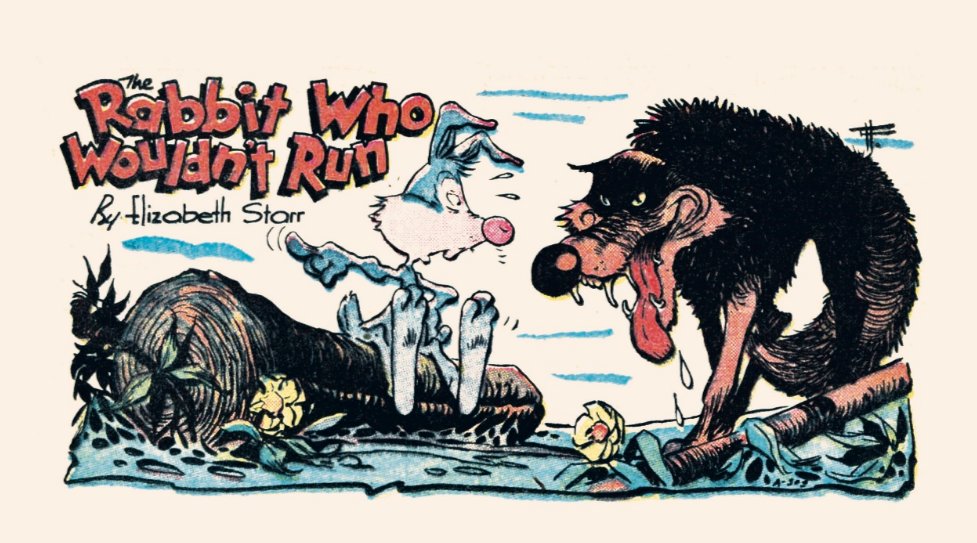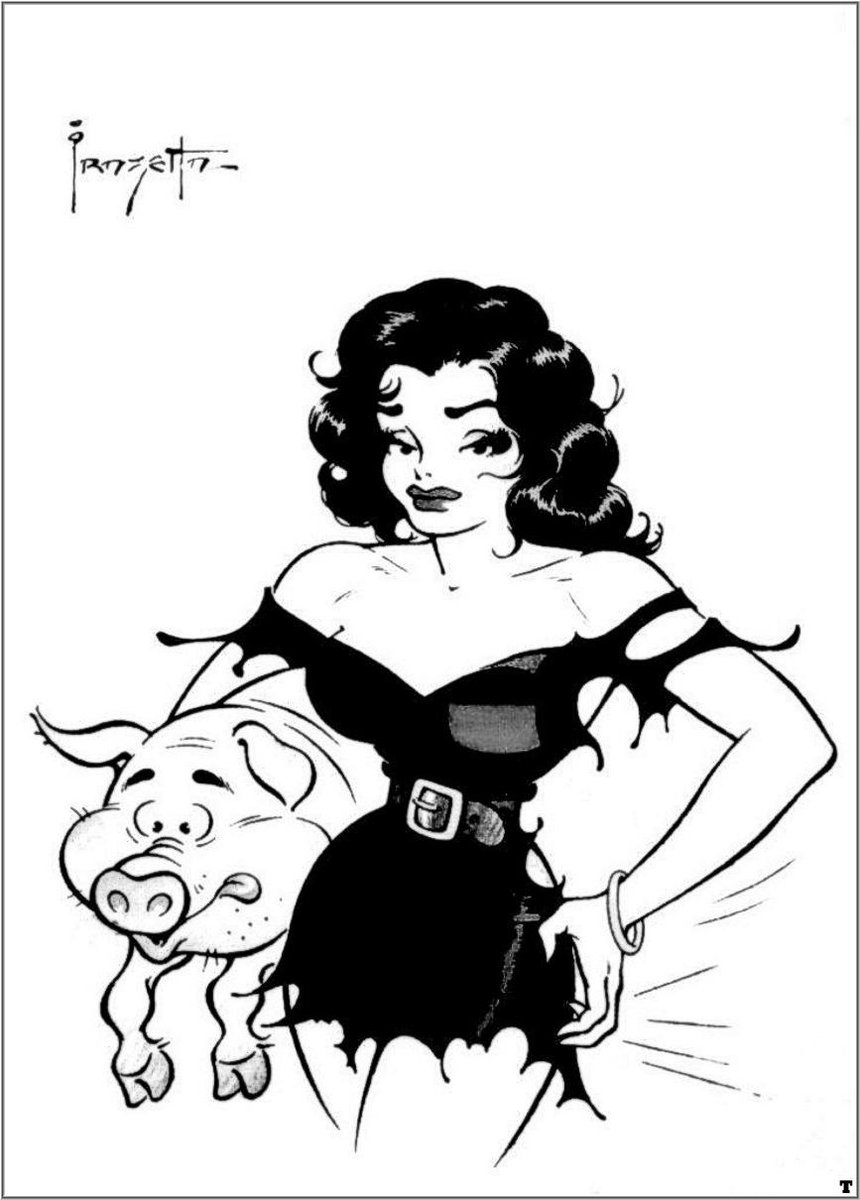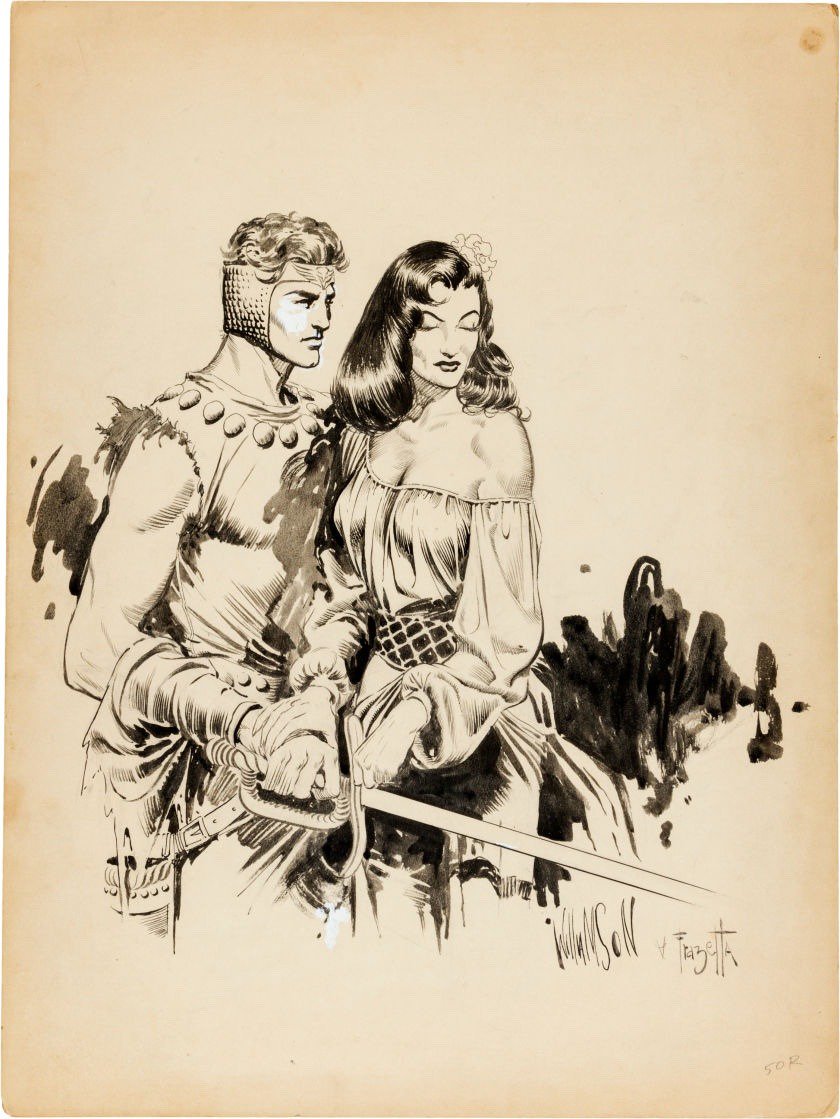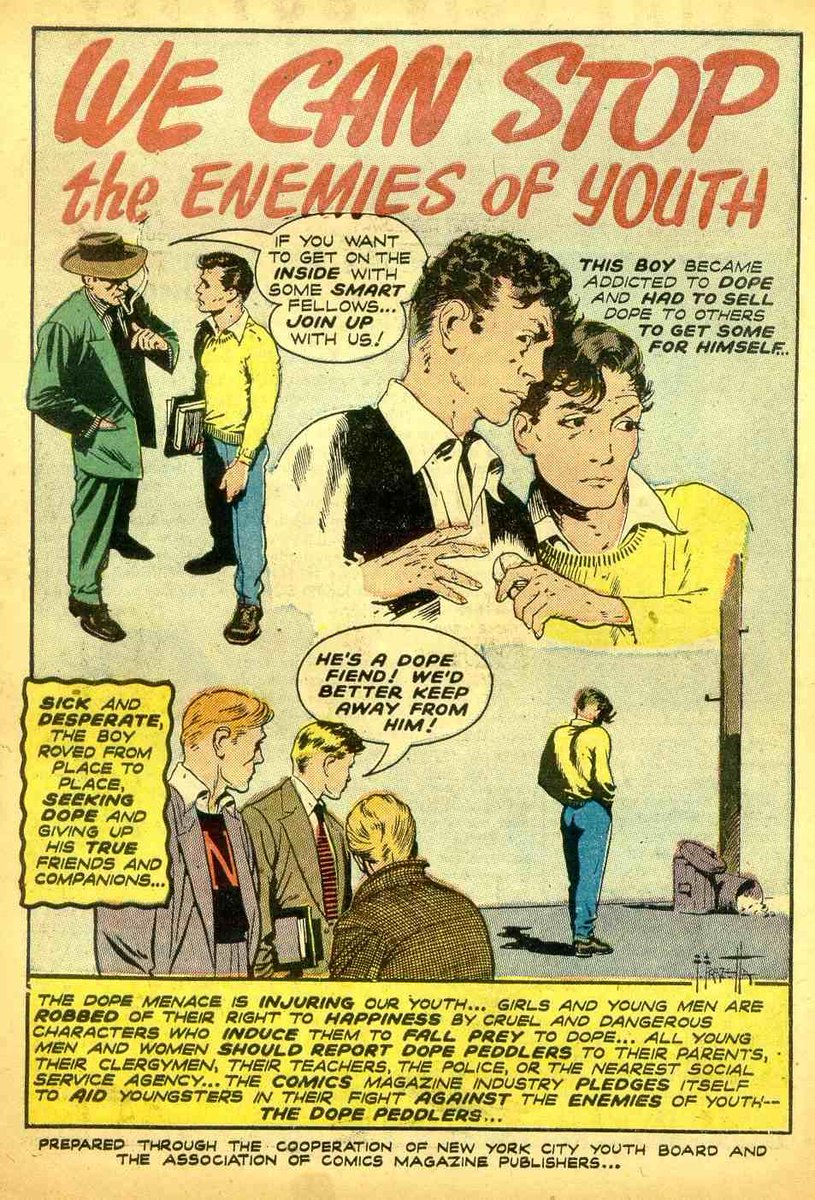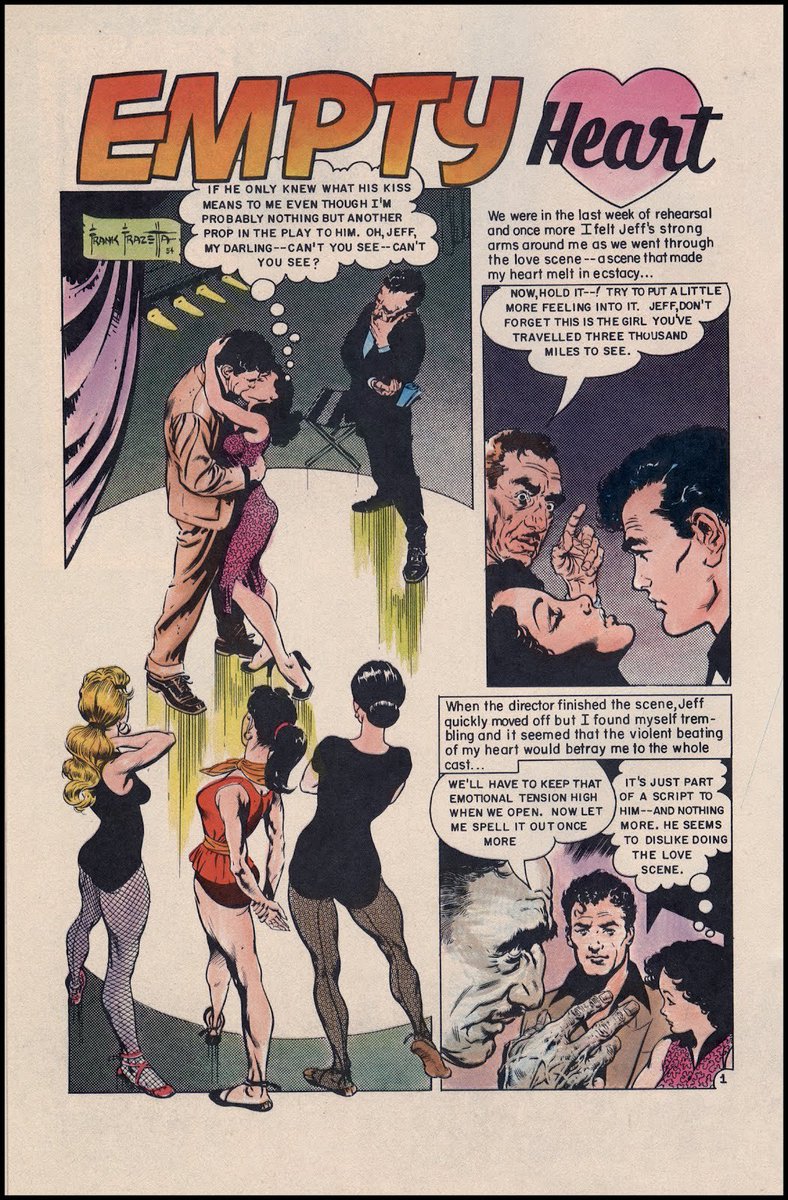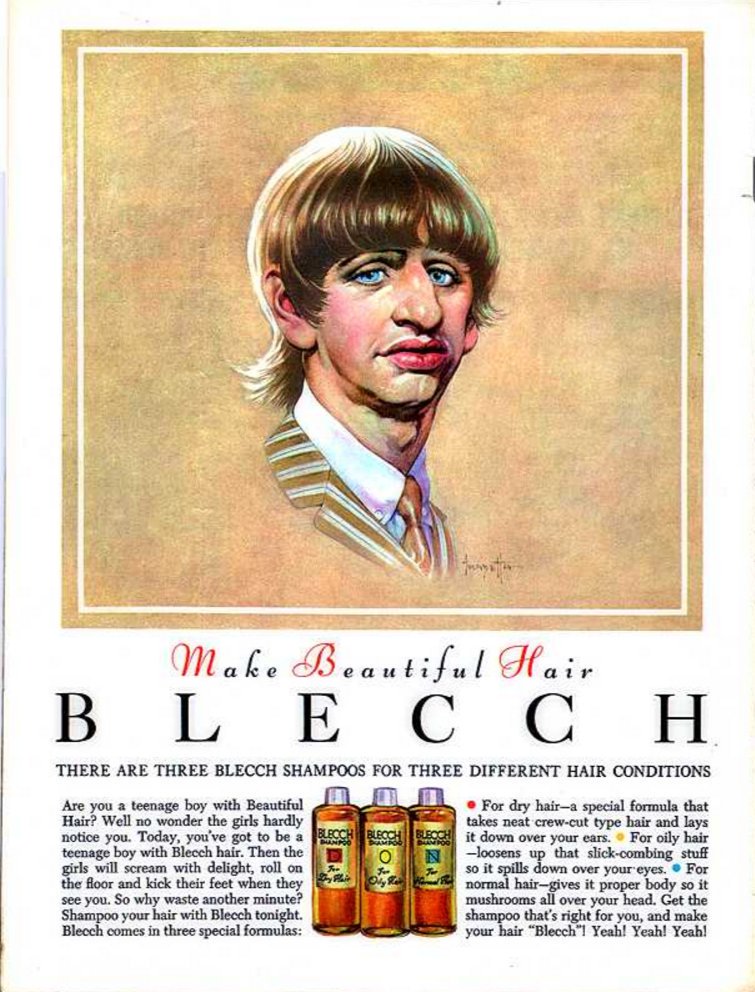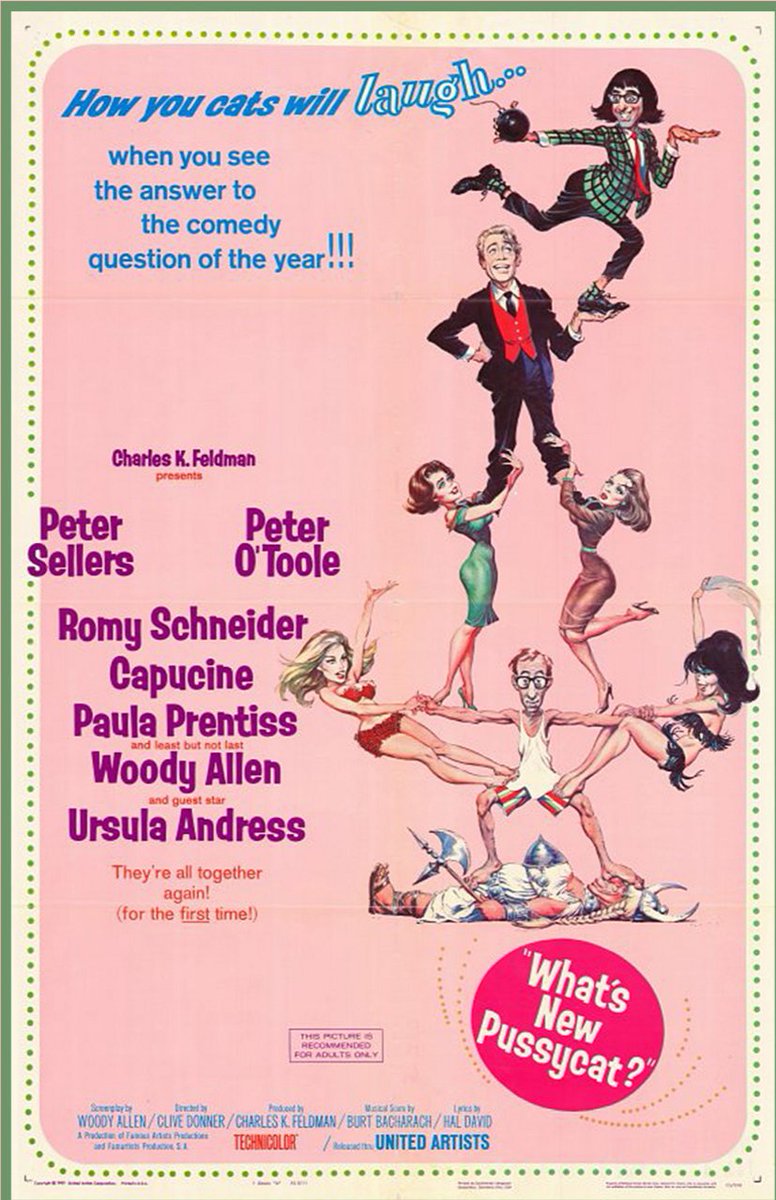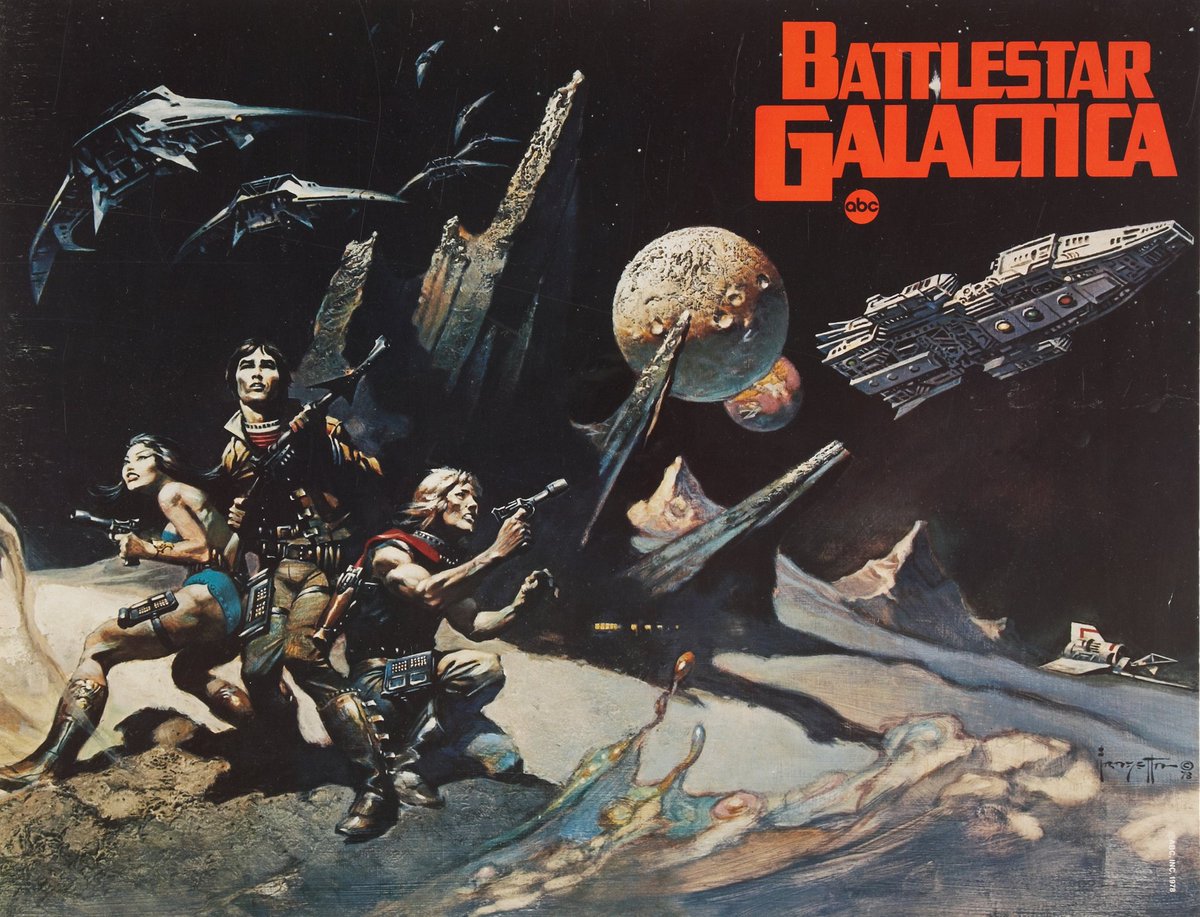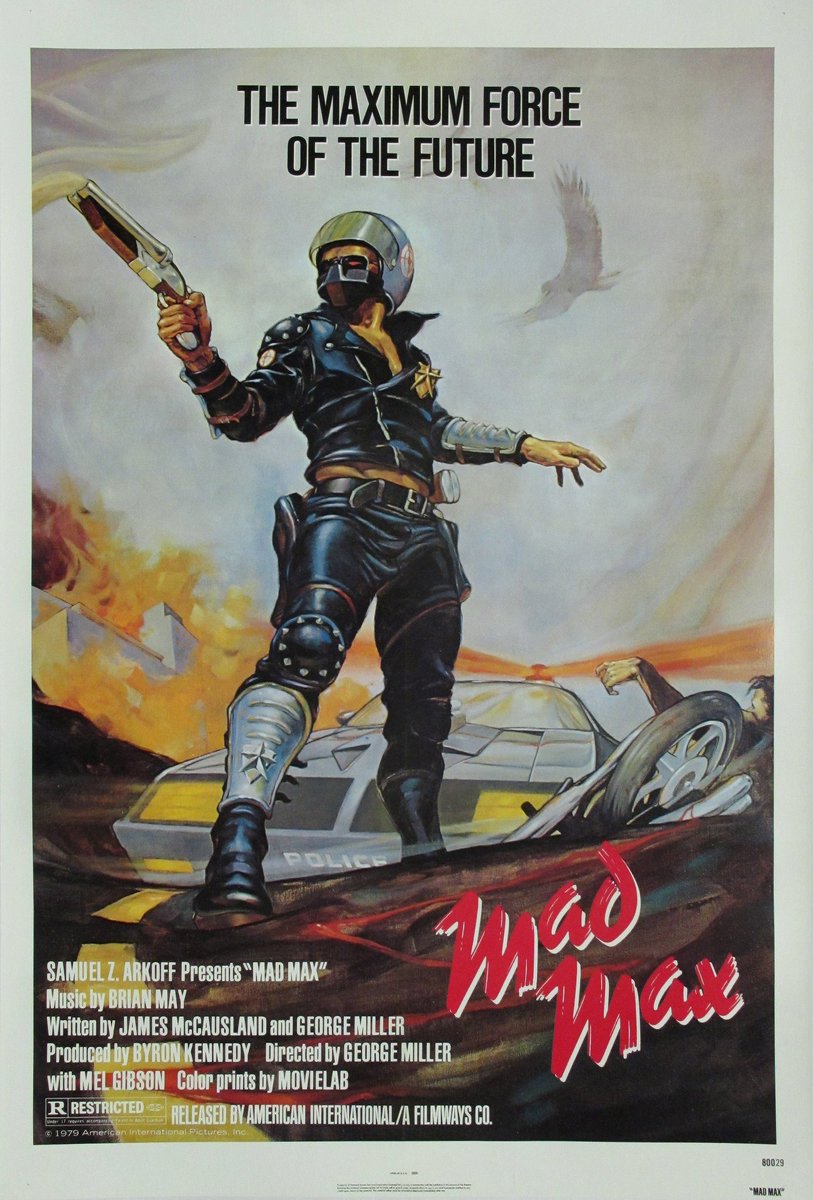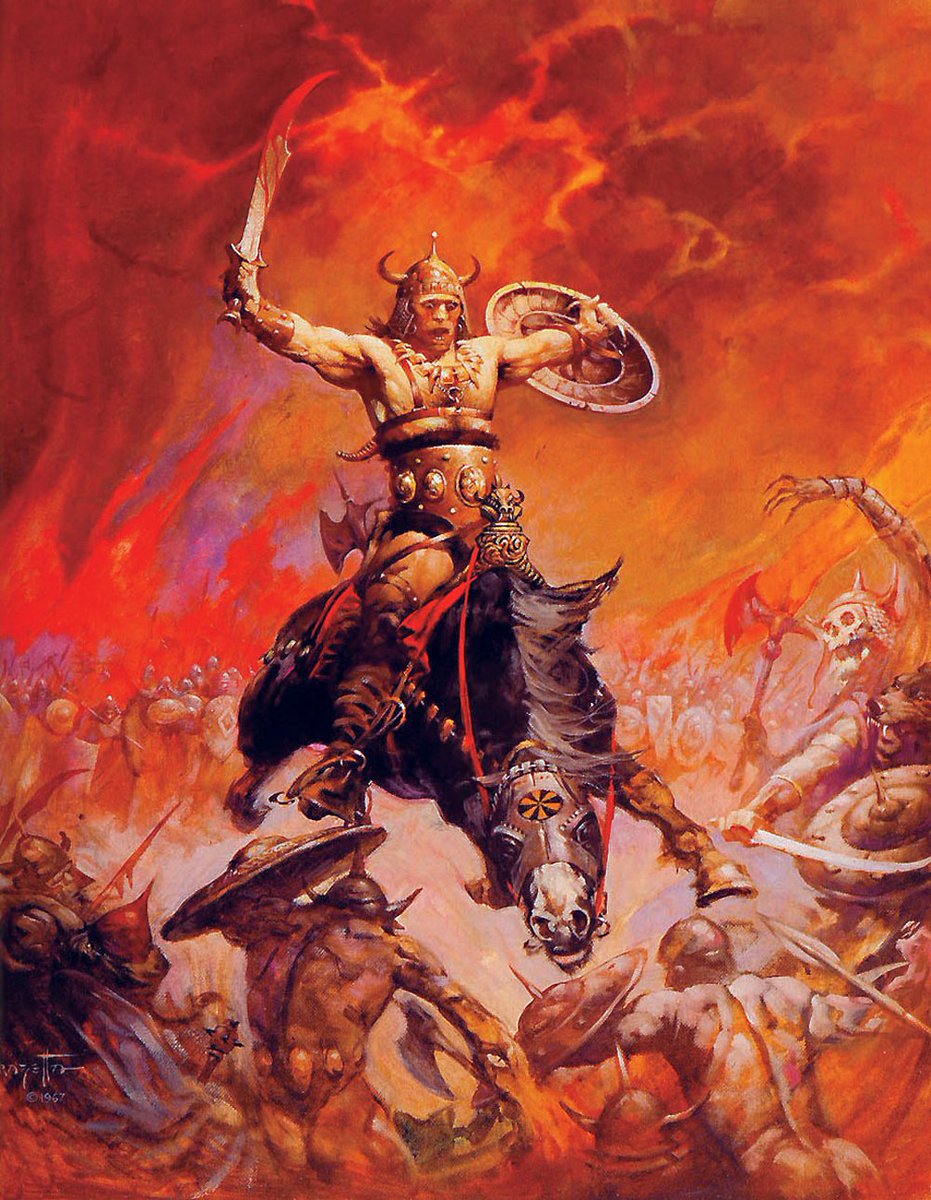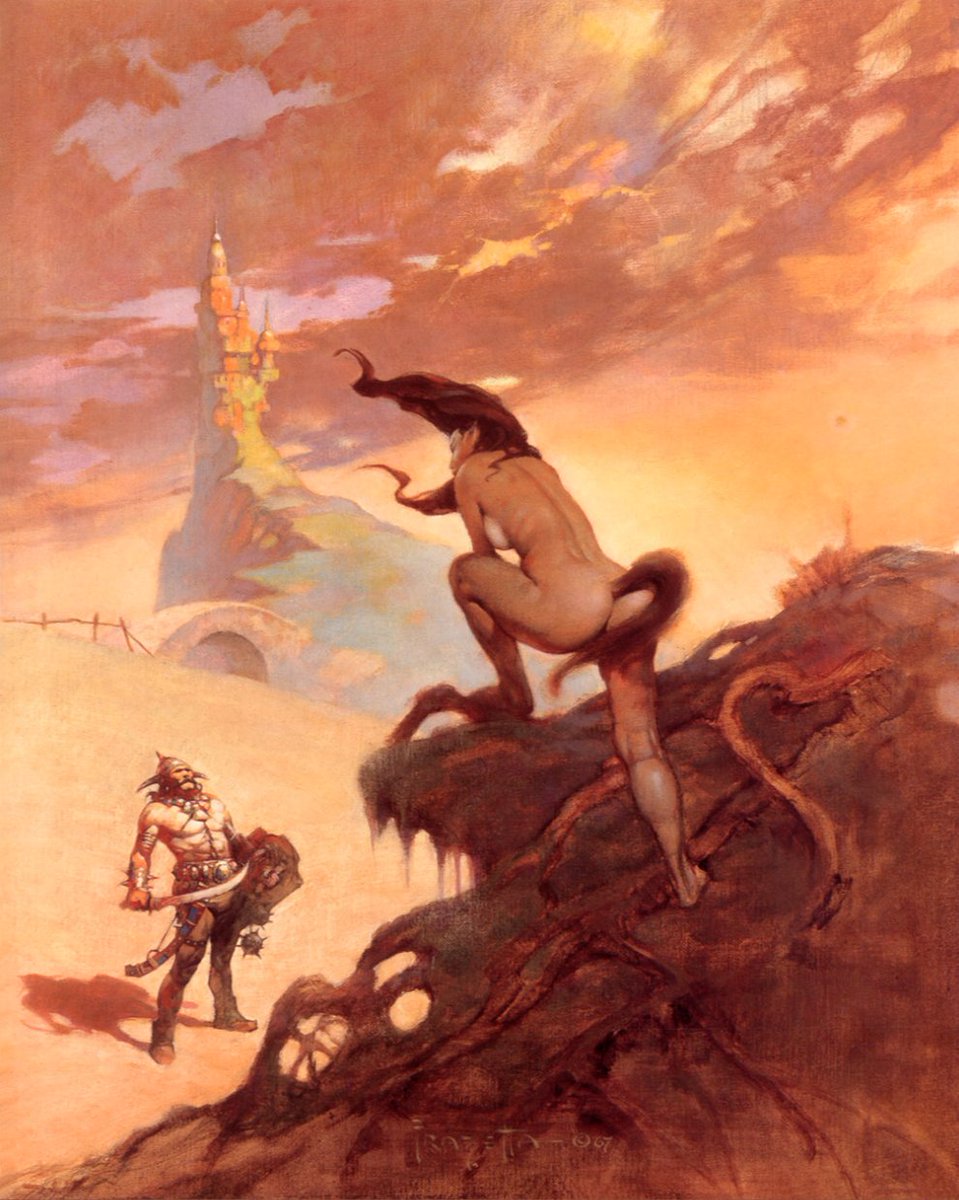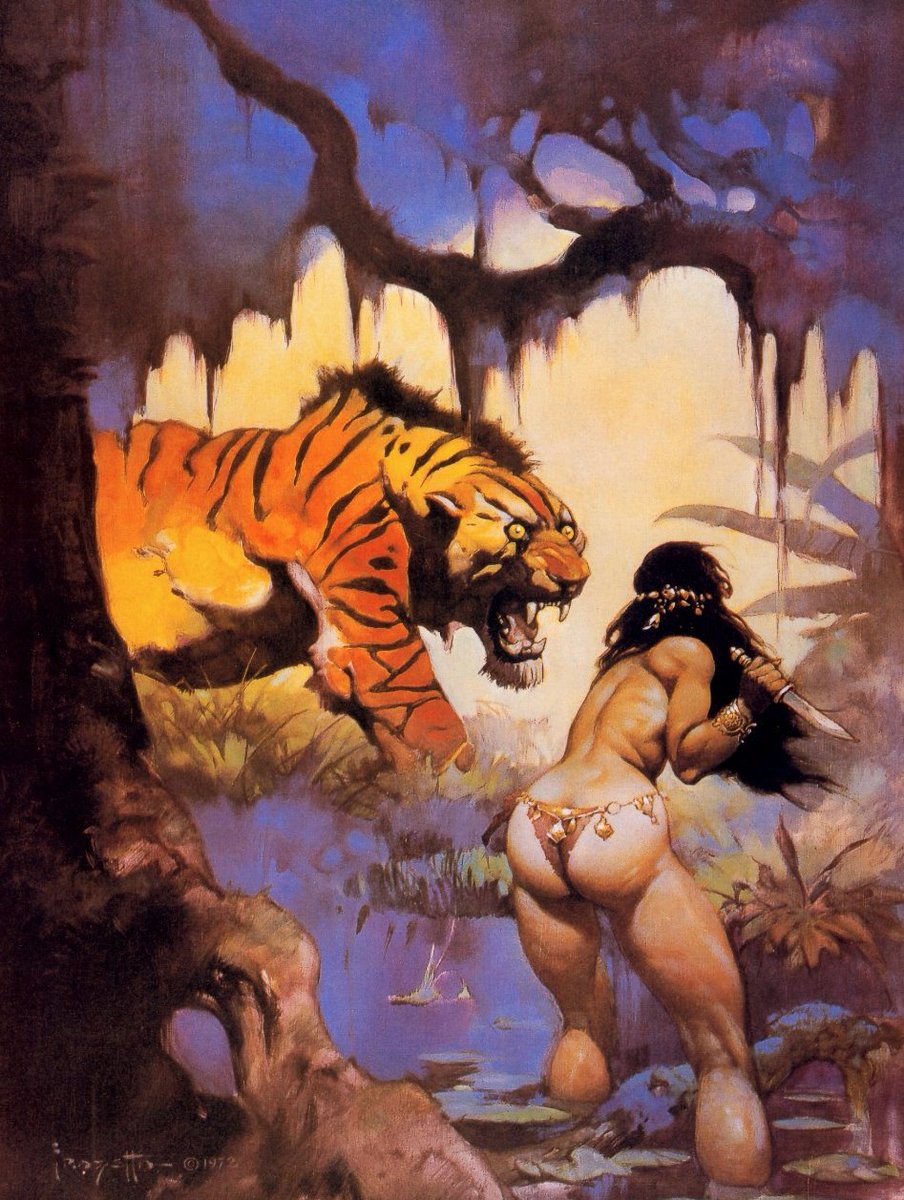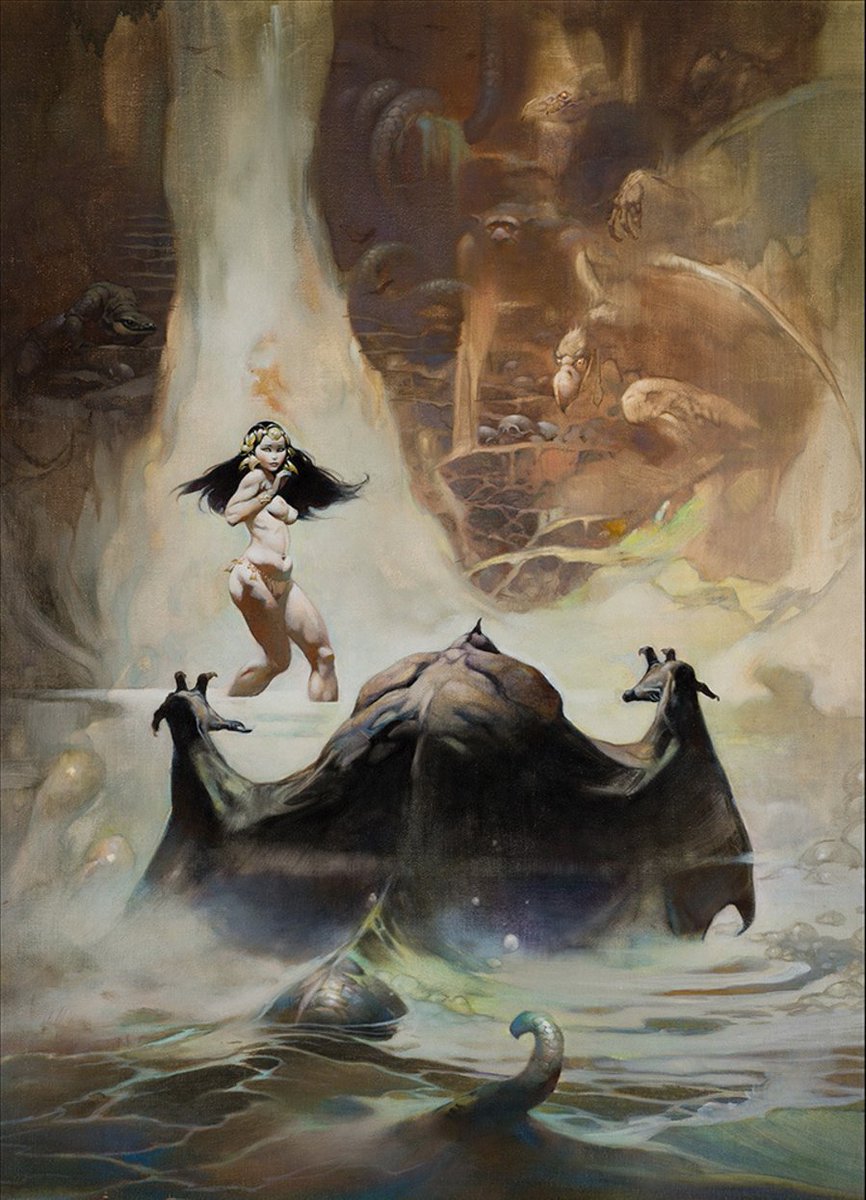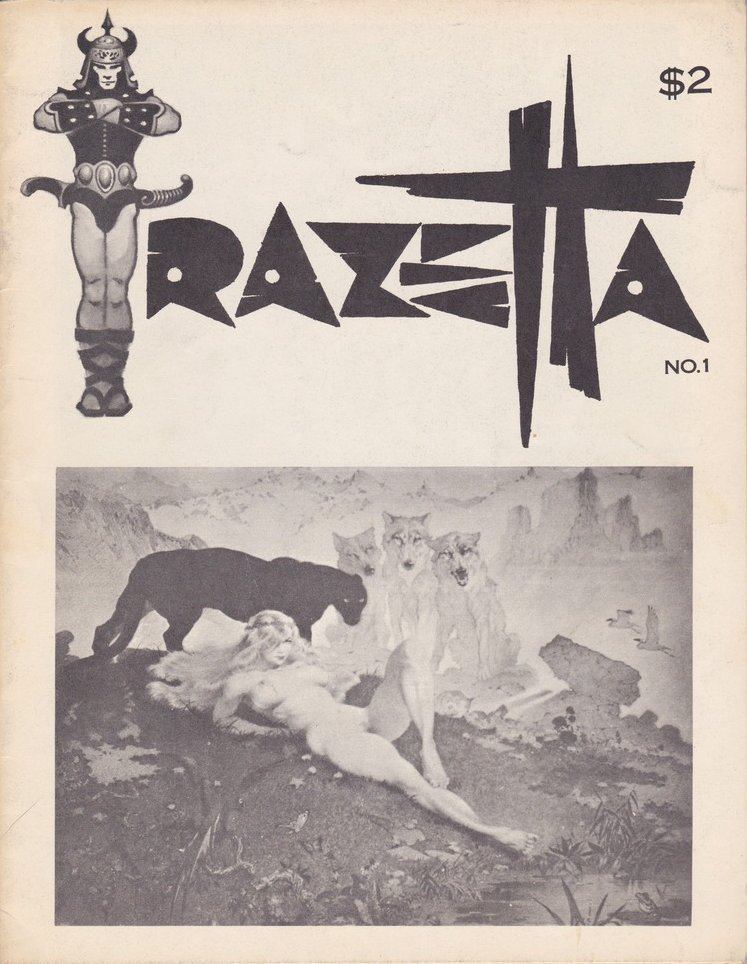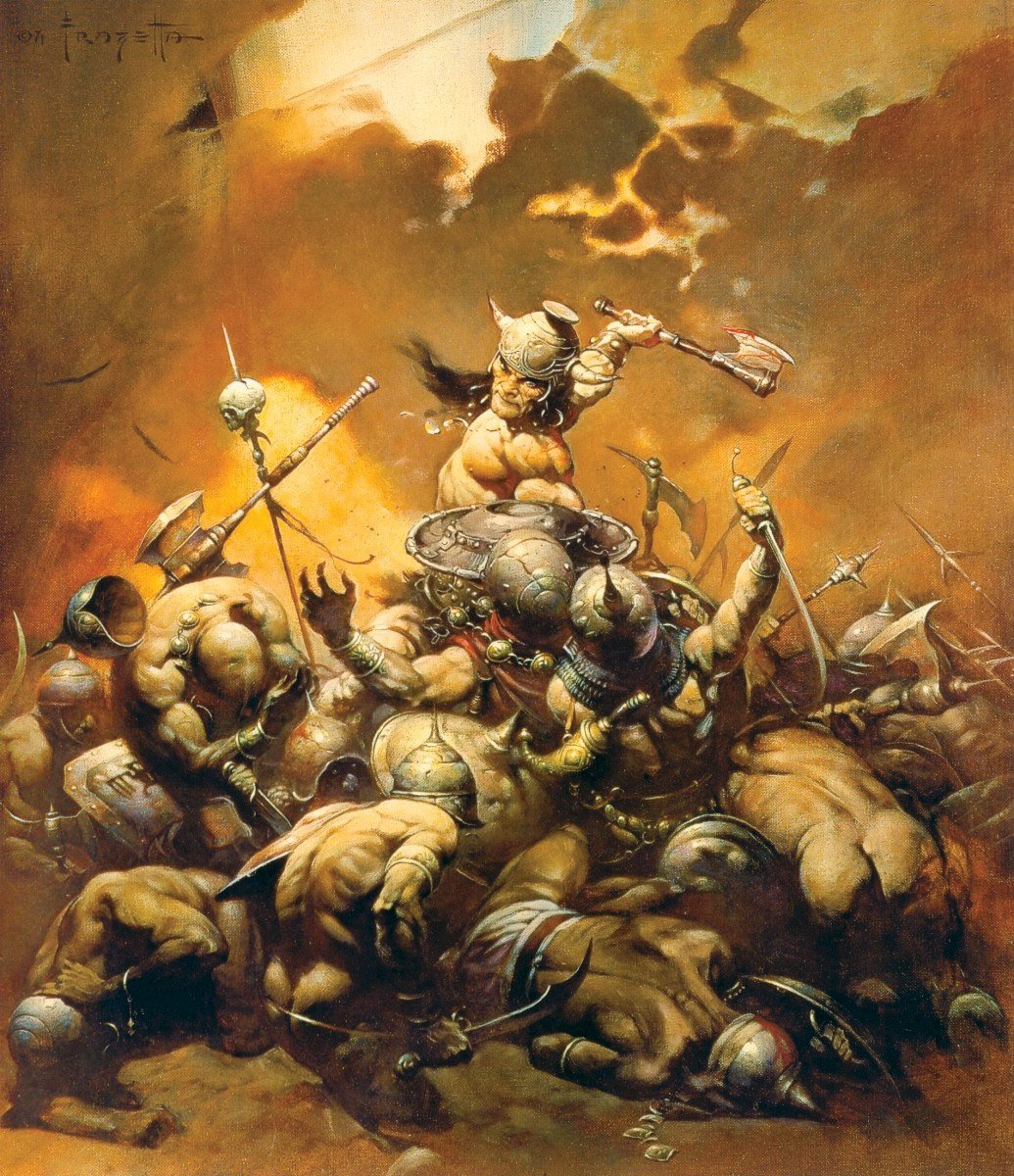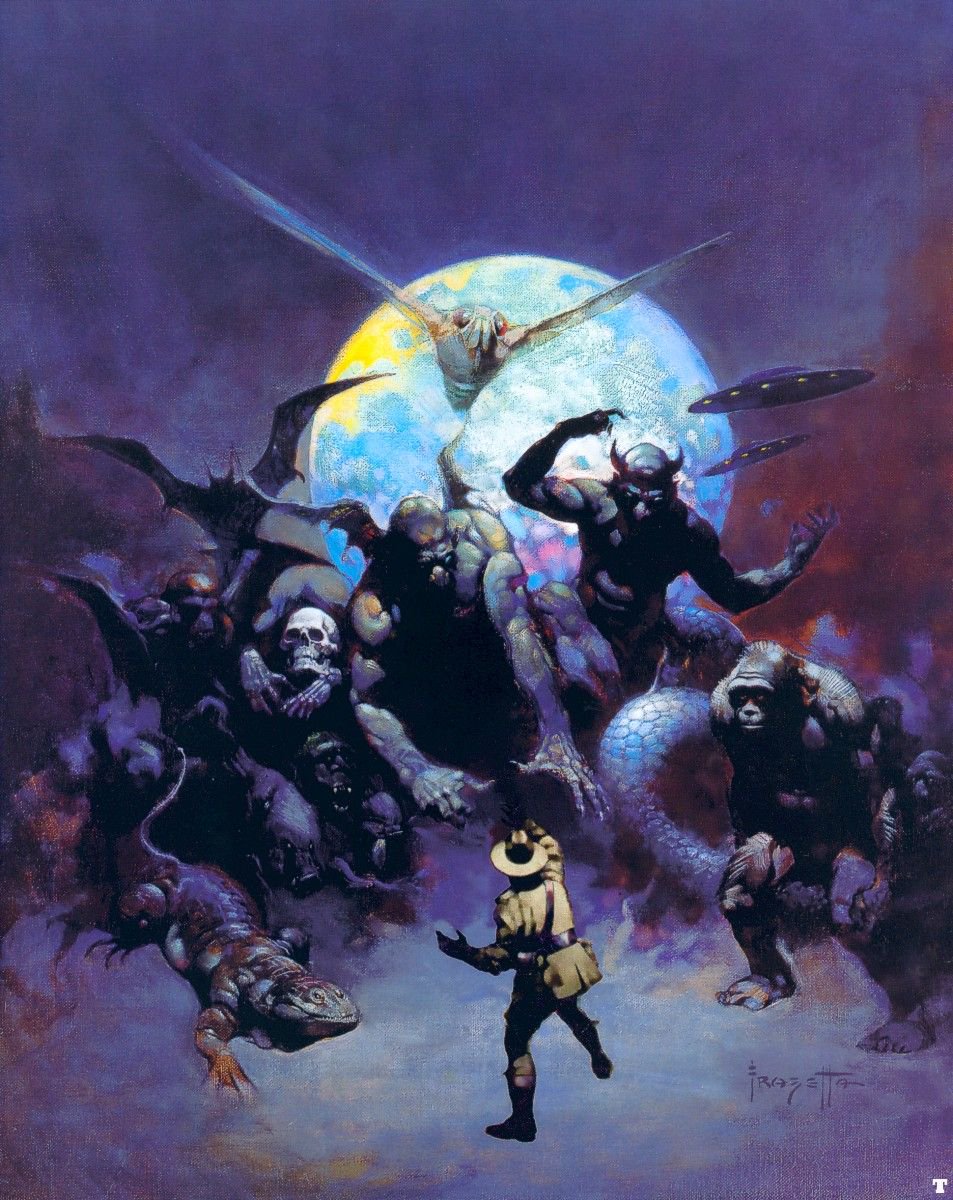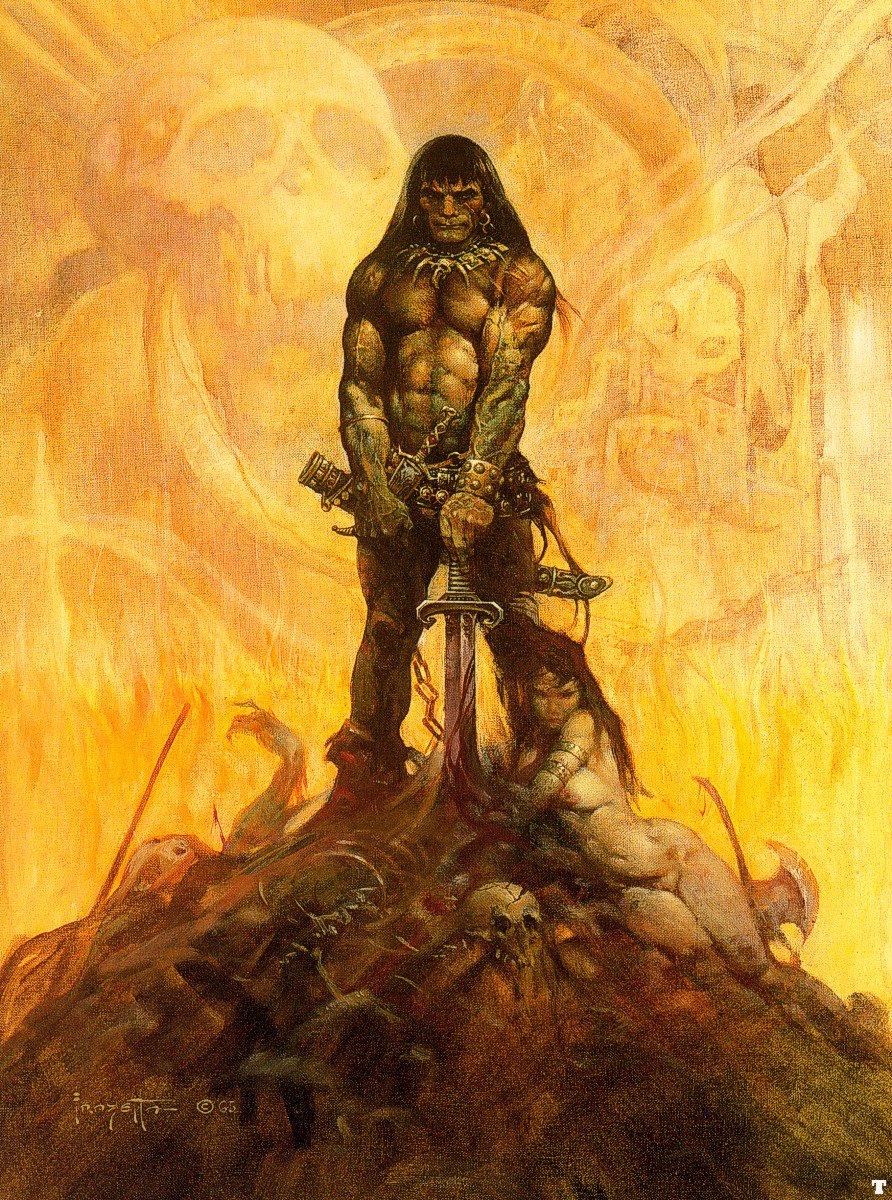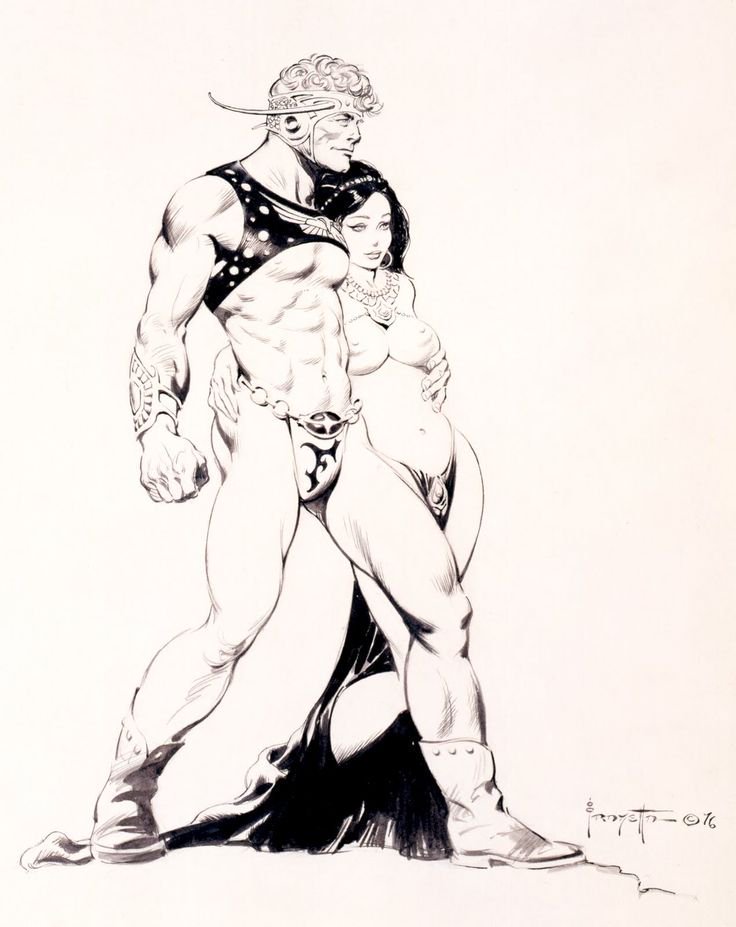Born in Brooklyn in 1928 Frank Frazzetta (with two Zs) showed amazing talent even at an early age: his kindergarten teachers were astounded that he could draw better than most 10 year olds when he was only five.
Aged eight Frazetta was enrolled in the Brooklyn Academy of Fine Arts under the tutelage of Michael Falanga. He later said he learnt little from his teachers but a huge amount from his classmates.
Frazetra began working as a comic illustrator at the age of 16, initially for Bernard Baily, before moving on to Standard Comics.
He was then approached by Am Call to work on his Li'l Abner strip, as well as working with Dan Barry on Flash Gordon and producing his own strip Johnny Comet.
By the 1950s Frazetta was working across a range of publishers: EC Comics, National Comics, Avon Comics, and several others.
Then in 1964 Frazetta's career took another turn: United Artists had been impressed by a Ringo Starr spoof Frazetta had done for Mad Magazine, and so they asked him to create a movie poster for the film What's New Pussycat. It paid handsomely.
Frazetta would go on to create a range of movie posters over the years, but as well as posters he was beginning to work on book covers. One series in particular cemented his reputation as King of the fantasy artists...
Lancer Books were republishing Robert E. Howard's Conan stories from the 1930s, and asked Frazetta to design the covers. His muscular, visceral and immersive images for Conan redefined fantasy art for a generation, as well as selling 10 million copies of the series.
From that point on Frazetta was very much in demand: Edgar Rice Burroughs was another series of books that were a perfect match for the Frazetta style, and he worked at a phenomenal pace in the late '60s and early '70s to meet the demand for his talents.
The Frank Frazettra fan club was set up in 1969, and by 1992 original Frazetta artworks were being sold for huge sums at auction.
For example in 2012 an original Conan painting was sold for $1 million; six years later Frazetta's Death Dealer went for $1.7 million.
The range of artists Frazetta inspired is huge, and his output was incredible. It's almost impossible to imagine the fantasy genre without Franzetta's aesthetic: muscular, organic, bold and striking - a heady mix of the Northern and Southern Renaissance styles.
Frank Frazetta passed away in 2010. He remains one of the most influential commercial artists of the 20th Century. If you're lucky enough to own a signed piece of his work better put it in the bank - you're sitting on a piece of art history!
More stories another time...
More stories another time...

 Read on Twitter
Read on Twitter